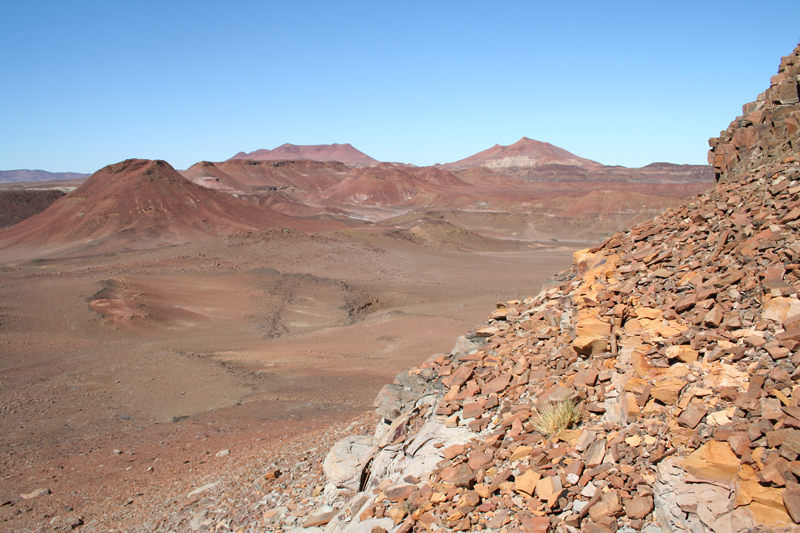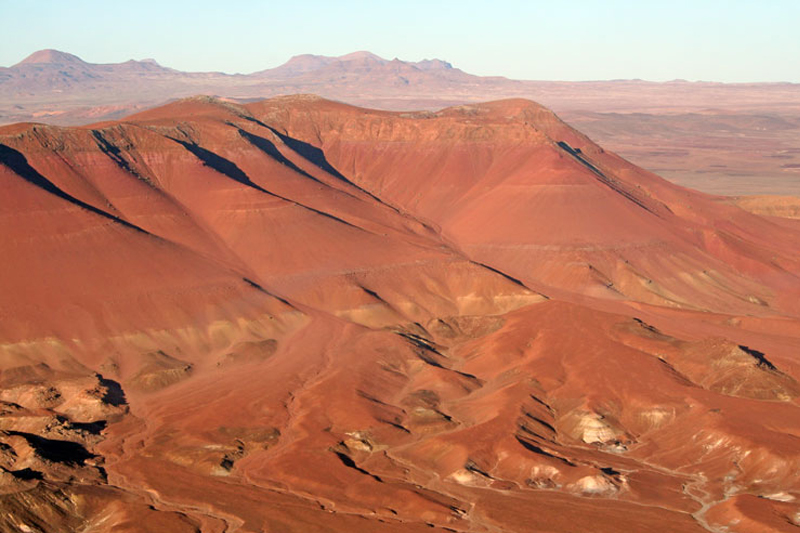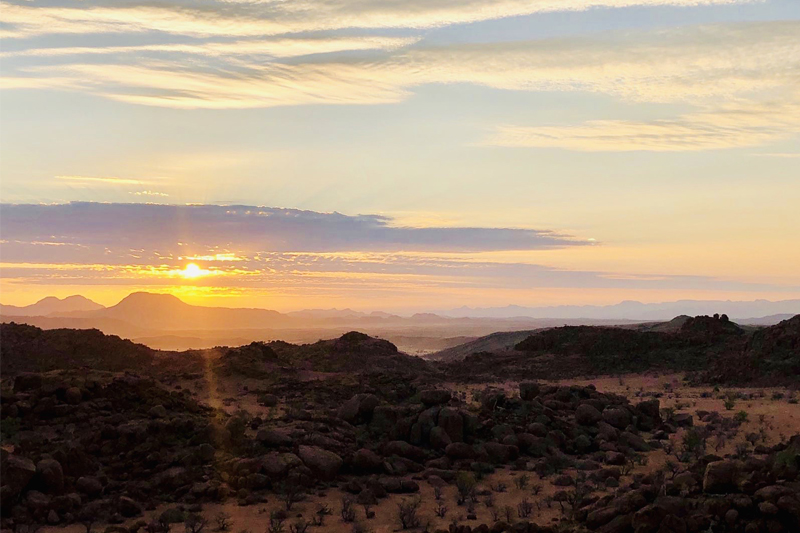Damaraland
Damaraland is a vast region of rugged mountains, gravel plains, sand dunes and river valleys.
This wilderness landscape stretches inland from the southern section of the Skeleton Coast National Park, sandwiched between the Omaruru River in the south, and the Hoanib River in the north. Although mostly accessible, Damaraland is rugged and wild, especially in the north and west.
The southern section includes Messum Crater (inland from Cape Cross) and the Brandberg Massif with its renowned rock art. The Brandberg is the highest mountain in Namibia at 2573m, and offers adventurous walking and some excellent birding.



The central section is arguably the best known area where Twyfelfontein (home to the famous rock engravings), the Burnt Mountain, the Organ Pipes and the Petrified forest lie close to the town of Khorixas. To the west of Twyfelfontein, around the Ugab and Huab Rivers, the landscape is incredibly harsh, a truly remote and rocky wilderness. The Huab Valley in particular forms part of a community conservancy, where just a couple of exclusive camps operate. Rhino are gradually being re-introduced to this area, which is already known for its ‘desert’ elephant populations.
The northern section includes two huge community conservancies, separated by the main road running north from the village of Palmwag to the outpost town of Sesfontein. Bordering the Skeleton Coast National Park to the west and adjoining the spectacular Hoanib River to the north, the Palmwag Concession is a vast and rugged wilderness which has the largest populations of desert black rhino in Namibia, in addition to a variety of general game including elephant, lion, cheetah, mountain zebra, giraffe, oryx, springbok and leopard. The concession is home to the Save the Rhino project, and there are very limited opportunities to track the desert rhino with the Save the Rhino scouts.
To the east of the main road lie the Etendeka and Grootberg Mountains. This region is equally impressive with similar game species found, though the rhino and elephant populations are a little more sparse. A couple of remote lodges offer exploration of the region by vehicle or on foot.

